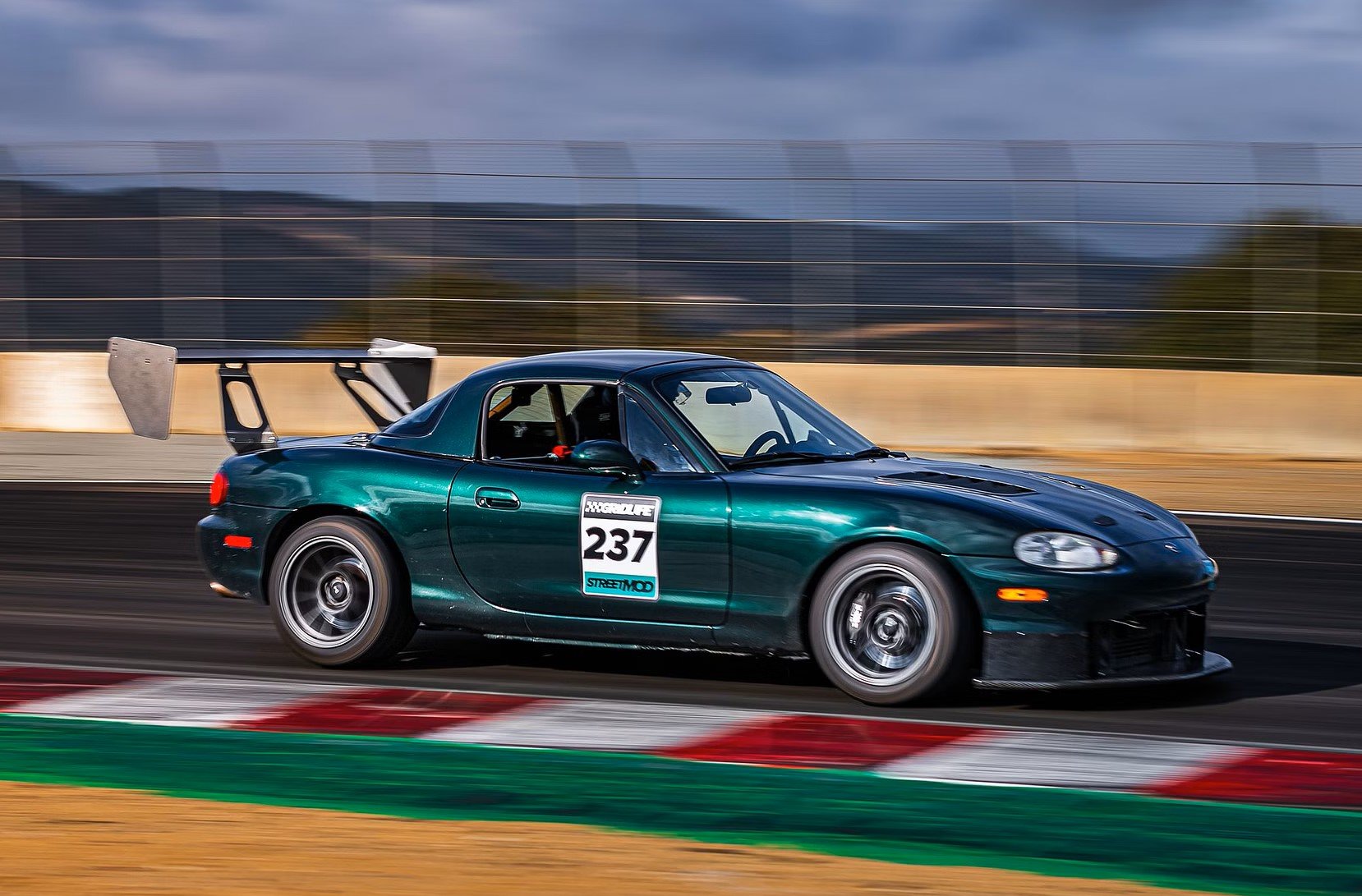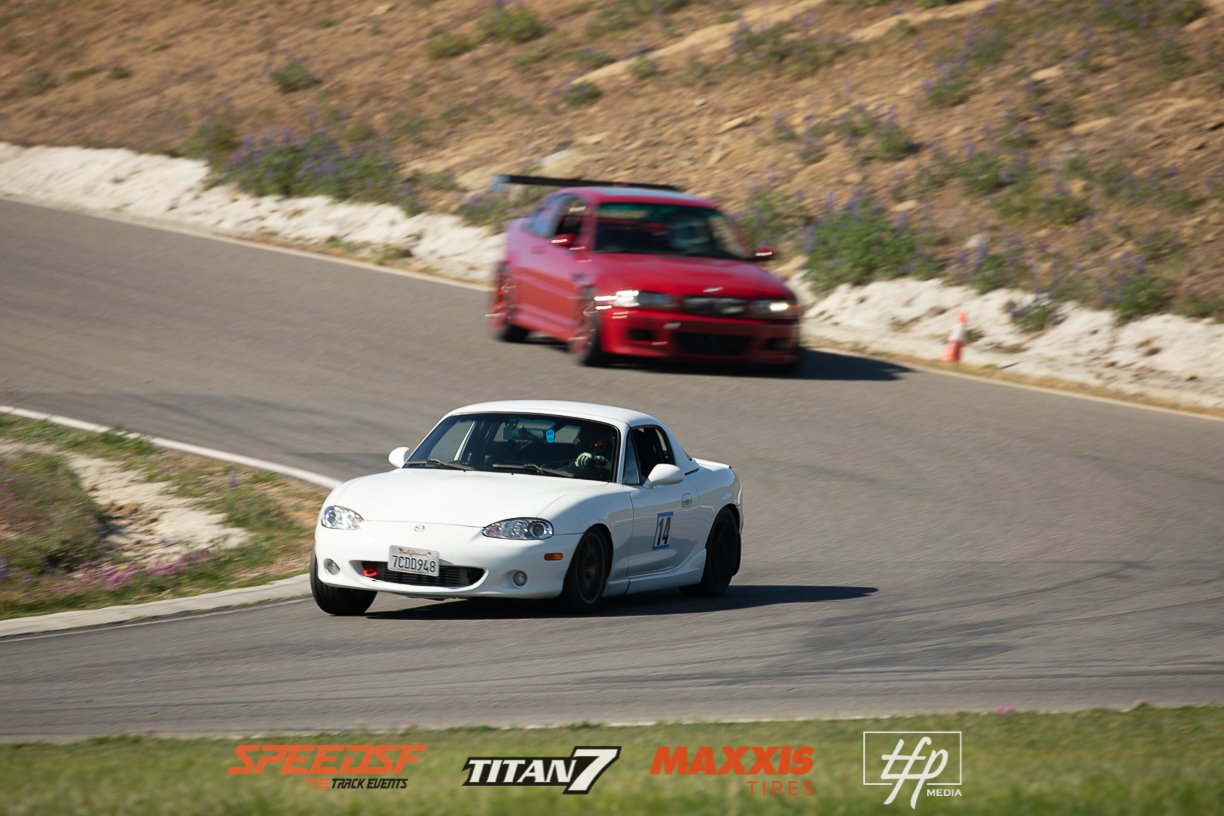
SpeedSF Blog
Every Build Has a Story – Meet the Cars of SpeedSF

Chris’ DCT-Swapped Miata: Grasping the Big Picture
By sourcing the right parts from retired race cars, using all his industry know-how, and taking the leap to install a BMW DCT in his NB, Chris Watson’s found an inspiring recipe for a reliable track-tuned Miata that can lap Laguna in 1:33.

Fan’s NC Miata: Truncating Ten Years
Proper planning and dedication to simulator racing helped Fan learn the skills needed to run fast laps in roughly a third of the time it takes people without a well-researched plan. Now, he laps Laguna Seca in this mildly modified MX-5 in the 1:45-range.

Sam's Semi-OE Turbo Miata: Taking Advantage of Pre-COVID Pricing
After growing tired of his tuned Abarth, Sam scoped out a lighter, rawer, and more involving car. However, he’d grown accustomed to turbo power, so whatever he ended up buying couldn’t be anemic. Fortunately, his friend was looking to sell an NB with the whole Mazdaspeed powertrain already swapped.
